
Mineral specimens are commonly described as dendritic, acicular, columnar, striated, botryoidal, banded, and prismatic, acicular.
These terms are the language of crystal habits and are an integral part of a conversation when we describe mineral specimens. While using such terms, we seldom think about why a particular term works for us. I doubt we realize these terms are the direct result of two things, the mineral’s internal atomic structure and the role it plays in a mineral’s development and the effects of the environment on a mineral during formation. We already know when a mineral forms, it develops as one of the recognized crystal systems: isometric, hexagonal, monoclinic, triclinic, tetragonal, or orthorhombic. You may also come across a seventh system, trigonal. This is actually a sub-system based on two basic crystal forms in the hexagonal system.
Regular calcite can show an obvious hexagonal form while some calcites develop in rhombic crystals, so they are identified as trigonal crystals. You have undoubtedly seen this in some rhodochrosite specimens, which is another carbonate. This mineral type shows the same two hexagonal systems. When we describe a mineral, we may start by naming its crystal system. But we need to use terms that describe the specimen in far more detail, and that’s when we describe the mineral’s crystal habits. Native copper is an example of this. It is a cubic or isometric mineral.
This story is from the July 2020 edition of Rock&Gem Magazine.
Start your 7-day Magzter GOLD free trial to access thousands of curated premium stories, and 8,500+ magazines and newspapers.
Already a subscriber ? Sign In
This story is from the July 2020 edition of Rock&Gem Magazine.
Start your 7-day Magzter GOLD free trial to access thousands of curated premium stories, and 8,500+ magazines and newspapers.
Already a subscriber? Sign In
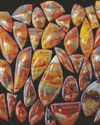
MORGAN HILL POPPY JASPER
In California, there are very few places to collect semi-precious stones. Many locations from the past have been either exhausted of the material or the land has been developed.
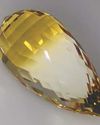
THE ACORN
The briolette gemstone has the same design attributes of a regular gemstone, however, the pavilion is elongated and the crown is usually domed. This is perfect for an elegant pendant, earrings or a pendulum.
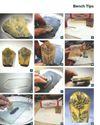
HOW TO PUT A PROTECTIVE CAP ON A CAB
To protect a specimen cab, often a cap is needed. In my case, I had a slab with the because of the color of the background and the pattern. This background had a more silicified consistency than most sandstones. It had no graininess like most sandstone, so I'm inclined to compare it to a jasper. The pattern was typical of a dendrite.

The Resilient Revival of Anne Brontë & Her Stones
For the first time, the Anne Brontë rock collection underwent complete description and identification, and along with Professor Hazel Hutchison of Leeds University and Dr. Enrique Lozano Diz at ELODIZ (a company specializing in spectroscopy analysis), an analysis of that collaboration, Anne Brontë and Geology: A Study of her Collection of Stones, was published in April 2022 in Volume 47, Issue 2 of the peer-reviewed journal, Brontë Studies & Gazette.\"

Amazing Women with Rock-Solid Careers
Explorers, Geologists, Educators & Jewelry Makers...
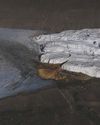
The Case of the Bleeding Glacier
It's a gory sight called Blood Falls. Ever since British geologist Thomas Griffith Taylor first noted it in 1911, it has been a mystery.
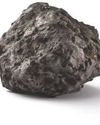
Asteroid Samples Are Said to Hold Invaluable Secrets
If Only Scientists Can Pop the Lid!
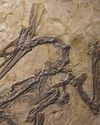
Paleontologists Embrace a New Method for Seeing Fossils within Rock
Fossil bone can be delicate. Attempts to remove it from a hard rock matrix by picking and scratching or etching with acids can be time-consuming and/or may end up obliterating that which you hope to study.

Need a Map of the Ocean Floor?
Call in the Seals!

A Step Closer to Hydrogen, the "Climate-Friendly Fuel"
As I reported last June, the world is racing to find sustainably renewable, nonpolluting sources of energy to replace our carbon-based reserves of coal, oil and gas.